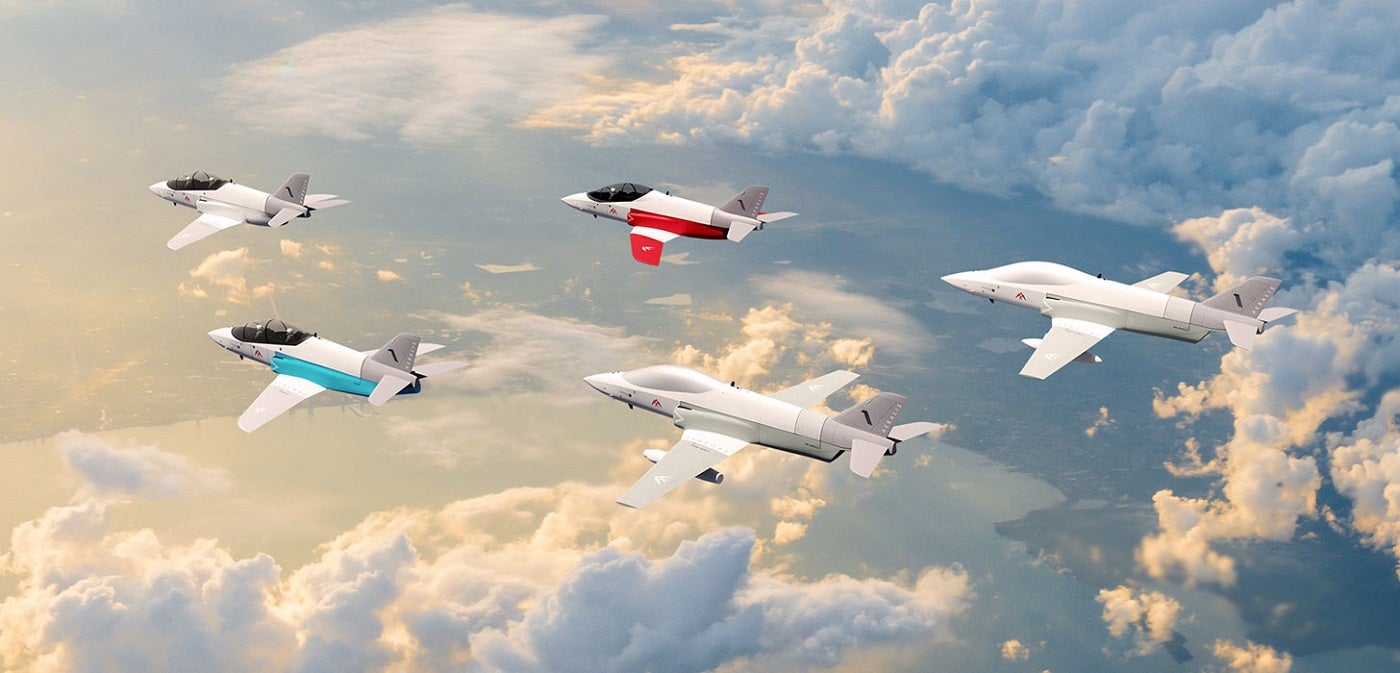
Yesterday, at the highly anticipated Defence and Security Equipment International (DSEI) event, Aeralis pulled back the curtain on its latest designs for its upcoming modular light jet aircraft.
These aircraft, featuring the advanced jet trainer as their inaugural model, are built around modularity. Aeralis’s new aircraft will provide versatility, transonic capability, and cost-effectiveness.
These designs make adaptability the cornerstone of these aircraft’s capabilities. The common core fuselage (CCF) is underpinning this concept and is destined to become the linchpin of Aaeralis’s future aircraft fleet.
From its inception, Aeralis has championed modularity, resulting in a design that transcends traditional boundaries and can cater to various markets.
Following a design review chaired by the esteemed Sir Julian Young, Aeralis’s new light jet aircraft introduces a new wing architecture. Comprising an inner wing and an outer wing grants the plane the agility to operate at both low and high speeds, endowing it with transonic capabilities.
The aircraft’s flexibility lies in the aircraft’s design, enabling multiple configurations such as the Advanced Jet Trainer, Aggressor, Companion, ISTAR, and Tanking options.
All these configurations share a common foundation—the CCF, allowing customers to enhance their platform’s functionality by acquiring additional modules per their specific needs.
The new Aeralis aircraft has a design that accommodates extra fuel capacity and enhanced electronic capabilities, ensuring resilience, maintainability, and performance gains.
Furthermore, redesigning the fuselage and introducing new wings eliminate the necessity for bespoke landing gear, a feature of previous iterations. Instead, the aircraft will now employ readily available commercial off-the-shelf landing gear, simplifying maintenance and significantly reducing associated costs.
Aeralis’s modular cockpit is multifunctional. The single-seat configuration provides room for Electromagnetic Warfare (EW) capabilities or additional fuel payload, while the dual-seat option accommodates an extra pilot.
Including a full combat radar in the nose cone further enhances combat effectiveness for ISTAR and EW configurations, making the aircraft equally adept at real-world missions and training scenarios.
The unveiling of Aeralis’s aircraft design marks a milestone on the path to market availability, with the aircraft set to become operational later in the decade.
In February 2021, the Royal Air Force awarded aircraft developer Aeralis a three-year research and development contract for the modular jet development and design.



